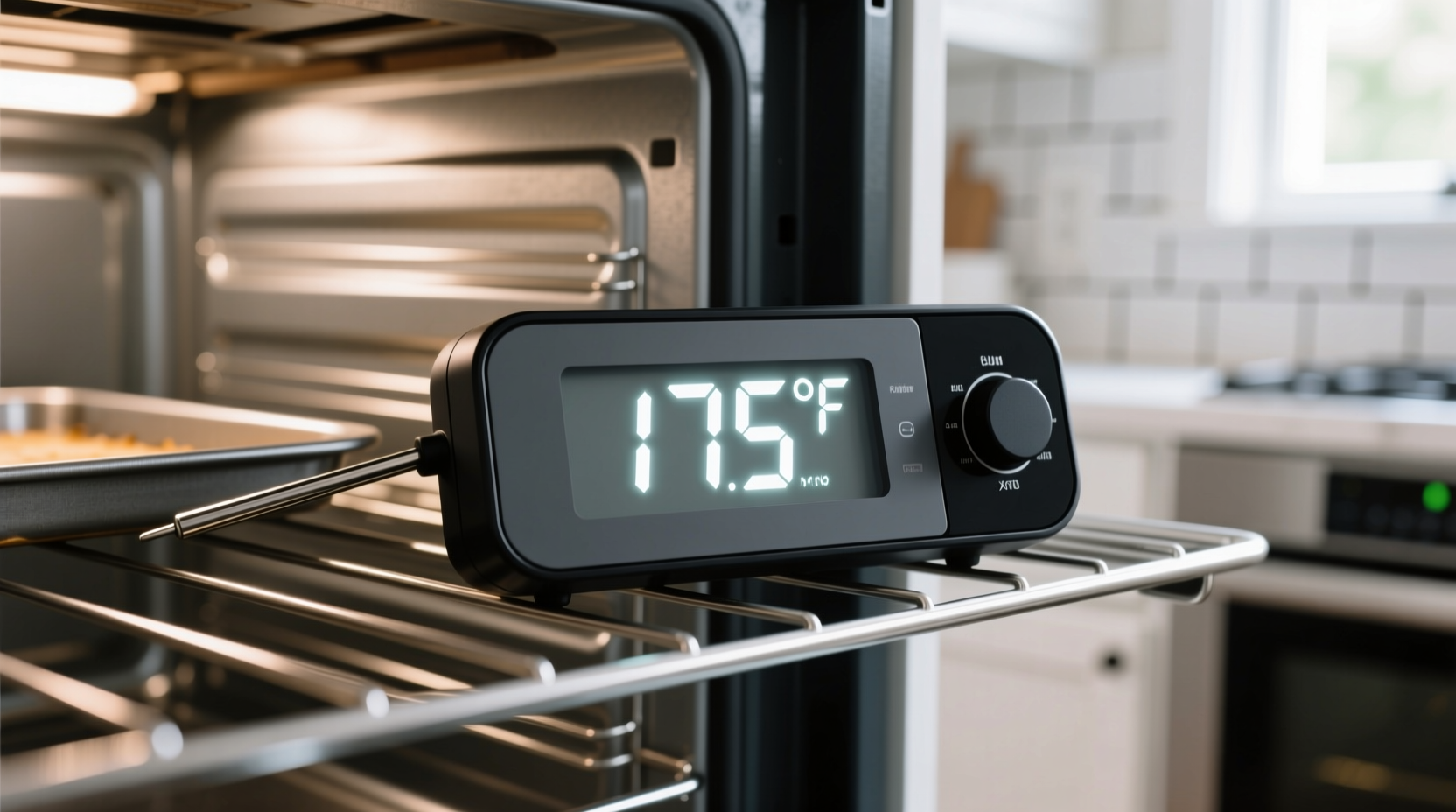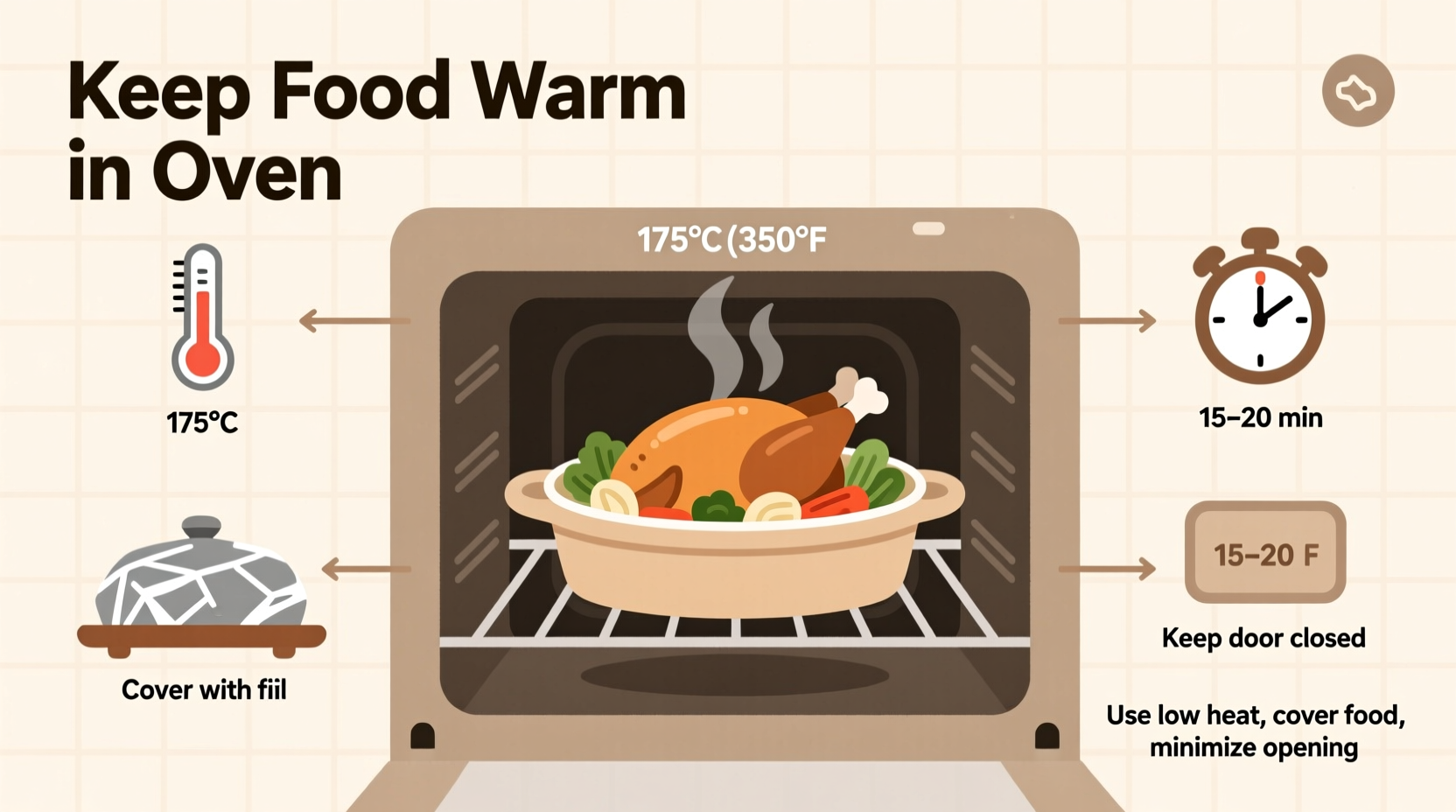When hosting gatherings or preparing multi-course meals, maintaining proper food temperature becomes critical. Many home cooks make the mistake of cranking their ovens too high, only to find their carefully prepared dishes overcooked or dried out by serving time. Understanding the science behind heat retention transforms how you manage food preparation timing and presentation.
The Food Safety Foundation
Before diving into warming techniques, understanding food safety parameters is essential. According to the USDA Food Safety and Inspection Service, cooked food must remain at 140°F (60°C) or higher to prevent bacterial growth. The temperature danger zone between 40°F and 140°F allows pathogens to multiply rapidly, making proper warming not just about quality but safety.
| Food Type | Minimum Safe Temperature | Optimal Warming Range | Maximum Holding Time |
|---|---|---|---|
| Meats & Poultry | 140°F (60°C) | 170-180°F (77-82°C) | 1.5 hours |
| Casseroles & Grains | 140°F (60°C) | 175-185°F (80-85°C) | 2 hours |
| Breads & Pastries | 140°F (60°C) | 165-175°F (74-80°C) | 45 minutes |
| Vegetables | 140°F (60°C) | 170-180°F (77-82°C) | 1 hour |
Step-by-Step Warming Protocol
Temperature Calibration Process
Most home ovens have significant temperature variance. Before relying on your oven's warming setting, perform this calibration test:
- Place an oven-safe thermometer in the center rack position
- Set oven to its lowest setting (typically labeled "Warm" or 170°F)
- Allow 20 minutes for temperature stabilization
- Record actual temperature—adjust as needed to hit 170-200°F range
Proper Food Preparation for Warming
The method you use to prepare food before warming significantly impacts results. Professional kitchens follow these steps when holding food for service:
- Foil tenting technique: Loosely cover food with heavy-duty aluminum foil, leaving 1-2 inches of space between foil and food surface to prevent steaming
- Strategic placement: Position dishes toward the back of the oven where heat circulation is most consistent
- Moisture management: For dry items like roasted meats, place a small oven-safe dish of water beneath the food to maintain humidity
- Temperature monitoring: Insert an instant-read thermometer through the foil to check internal temperature without fully uncovering

Common Warming Mistakes and Solutions
Even experienced cooks frequently encounter these warming challenges. Here's how professional chefs address them:
Problem: Food Drying Out
Solution: Create a moisture barrier by placing food in an oven-safe dish with tight-fitting lid before adding the foil tent. For proteins, add 2-3 tablespoons of broth or pan juices before covering. The National Center for Home Food Preservation confirms that maintaining relative humidity above 65% prevents excessive moisture loss during holding.
Problem: Continued Cooking
Solution: Remove food from oven 5-10 degrees below target serving temperature. Residual heat will continue cooking food even at low warming temperatures. This technique, called carryover cooking, requires precise timing—remove roasts at 125°F for medium-rare instead of 130°F when planning to hold.
Problem: Inconsistent Temperature
Solution: Rotate dishes front-to-back and side-to-side every 30 minutes. Ovens have hot spots, especially convection models. Commercial kitchens use rotating ovens specifically for this reason, but manual rotation achieves similar results in home settings.
Advanced Warming Techniques
For special occasions requiring extended holding times, consider these professional approaches:
The Double-Warm Method
When preparing multiple dishes, stagger your warming strategy:
- Set primary oven to 175°F for most items
- Maintain a second oven or warming drawer at 140°F
- Move items to the lower-temperature oven 30 minutes before serving
This approach minimizes texture degradation while maintaining safety standards. The Culinary Institute of America's professional kitchen guidelines recommend this technique for events requiring food holding beyond 90 minutes.
Thermal Mass Strategy
Place heavy ceramic or cast iron dishes (preheated to 200°F) beneath your serving platters. These materials retain heat longer than metal, creating a thermal buffer that stabilizes food temperature. This method works particularly well for buffet-style presentations where oven access is limited.
When Not to Use the Oven
Certain situations call for alternative warming methods. The oven isn't ideal when:
- Holding food longer than 2 hours (use chafing dishes with fuel sources instead)
- Warming delicate items like soufflés or meringues
- Managing multiple temperature requirements simultaneously
- When oven space is limited for other cooking tasks
In these cases, insulated containers or warming trays provide better temperature control without occupying valuable oven space.
Practical Warming Timeline
Follow this timeline for perfect results when preparing a multi-course meal:
- 3 hours before serving: Finish cooking items requiring longest holding time (casseroles, braises)
- 2.5 hours before: Transfer to oven at 175°F with proper covering
- 1.5 hours before: Add moisture if needed; rotate dishes
- 45 minutes before: Add items with shorter holding requirements
- 30 minutes before: Reduce oven to 165°F for final holding
- 15 minutes before: Check final temperatures; make minor adjustments
Essential Equipment Checklist
Professional results require the right tools:
- Digital oven thermometer (calibrated annually)
- Heavy-duty aluminum foil (standard foil tears too easily)
- Insulated oven mitts (for frequent temperature checks)
- Instant-read thermometer with leave-in probe capability
- Oven-safe dishes with tight-fitting lids
Frequently Asked Questions
How long can you safely keep food warm in the oven?
The maximum safe holding time is 2 hours for most cooked foods when maintained at 140°F (60°C) or higher. After this point, food enters the temperature danger zone where bacteria multiply rapidly. For meats and poultry, limit holding to 1.5 hours to prevent overcooking and texture degradation.
What's the lowest oven temperature for keeping food warm without cooking it further?
The ideal warming temperature range is 170-200°F (77-93°C). Below 170°F risks entering the food safety danger zone, while above 200°F typically causes continued cooking. Always verify your oven's actual temperature with a separate thermometer, as most ovens have significant calibration variance at low settings.
Can I keep food warm in a turned-off oven?
A turned-off oven can maintain warmth for 20-30 minutes depending on initial temperature and oven insulation quality. However, this method doesn't maintain safe holding temperatures consistently. For food safety, always use an active heat source to maintain temperatures at or above 140°F (60°C). The residual heat method works best as a short-term solution immediately before serving.
Does covering food affect how it stays warm in the oven?
Covering food properly significantly improves warming results. Use heavy-duty aluminum foil tented loosely over food to trap heat while preventing steaming. For extended holding, place food in an oven-safe dish with tight-fitting lid before adding the foil layer. Uncovered food loses moisture rapidly at warming temperatures, leading to dry, overcooked textures even at appropriate temperatures.
What's the difference between 'warm' and 'hold' settings on ovens?
The 'warm' setting typically maintains 170-200°F (77-93°C), suitable for short-term food holding. The 'hold' setting, found on higher-end models, precisely maintains 140°F (60°C)—the minimum safe temperature for food holding. Many professional kitchens actually prefer the slightly higher 'warm' setting because it provides a safety buffer against temperature fluctuations while still preventing continued cooking.











 浙公网安备
33010002000092号
浙公网安备
33010002000092号 浙B2-20120091-4
浙B2-20120091-4